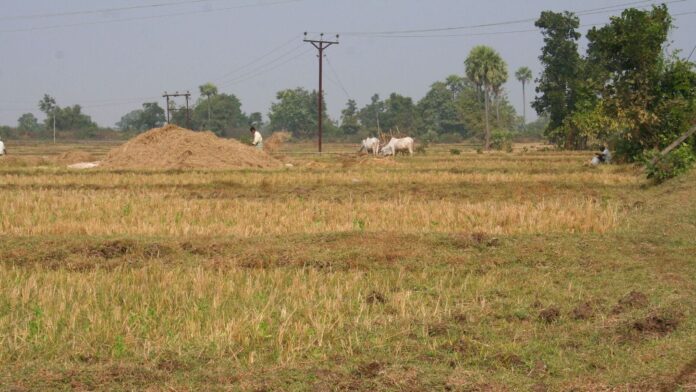He noted how old prejudices clouded discussions about the Orient. This offers a parallel with today’s climate change discourse, where pointing out the West’s historical pollution often leads to accusations of nationalism instead of addressing substantive issues.
Criticism from developing countries of the West’s disproportionate contribution to global warming is often dismissed, shifting focus from the message to the messenger.
On 6 August, an oped in Mint argued that India’s Economic Survey “has wide gaps and odd arguments” on climate change. This critique also claimed that the survey adopted a “defensive tone and overlooked deep vulnerabilities related to nationalism and climate change.”
While the survey aims to be comprehensive, there’s only so much ground a single chapter can cover. However, the critique seems to operate on the peculiar assumption that if something isn’t explicitly mentioned in a chapter on climate change, the government must not be addressing it at all. Regardless, seven issues can be flagged.
First, the charge that the survey adopts a defensive tone and fails to address India’s vulnerabilities overlooks its nuanced focus on India’s unique position in balancing development with climate action.
The survey acknowledges this challenge and critiques the overconsumption-driven solutions of the developed world while emphasizing India’s sustainable practices.
This tone counters the global narrative that labels India as a major polluter, ignoring its significant achievements, such as reducing emission intensity by 33% between 2005 and 2019, beating its target ahead of schedule.
Meanwhile, developed countries, responsible for over 75% of historical emissions, continue to impose stringent mandates on developing nations despite their high per capita emissions. Highlighting this disparity is not defensiveness, but a necessary critique of global inequities.
Ironically, the oped also claims the survey “appears to condone relative inaction by developed countries.” The thrust of the whole chapter is on a Western bias in the world’s climate agenda.
Second, it dismisses the debate on livestock feed as “irrelevant.” This misses a crucial aspect of climate discussions. Livestock consume 6 billion tonnes of feed annually, including one-third of global cereal production, with 86% of this feed being inedible for humans.
Research by Mottet et al (2017) shows that producing 1kg of boneless meat requires 2.8-3.2kg of human-edible feed, depending on the system. Ignoring this is short-sighted.
Third, the survey considers land consolidation a pivotal strategy for boosting agricultural productivity in India, where 86.2% of operational holdings are less than 2 hectares. This fragmentation hinders the adoption of modern farming techniques and efficient resource use.
The critique’s assertion that discussing land consolidation “without addressing the resultant incremental need for livelihood opportunities… rings hollow” is misplaced.
This view disregards the survey’s comprehensive strategy that links land consolidation to broader goals of agricultural modernization, economic growth and job creation.
By such logic, one could similarly argue against energy transition policies due to potential job losses in coal-mining states. One should read the survey’s chapter on employment, which rightly emphasises creating jobs in farm-allied activities.
Also, the critique says there is no discussion of land degradation. However, while the government has been working on land degradation, there is ample literature that suggests land consolidation projects “can help significantly to mitigate land degradation.”
Fourth, the oped suggests that the survey should have emphasized water storage and efficiency more. But the survey does highlight the value of sustainable water management, advocating a blend of traditional and modern practices.
It dedicates three boxes to water, stressing the urgency of its efficient use (our per capita availability has dropped from 5,177 cubic metres in 1951 to less than 1,500 projected for 2025) and recommends various strategies.
Fifth, the critique claims that the survey highlights “our complete lack of preparedness and foresight” on India’s dependence on a small set of countries for future energy resources. This assertion overlooks the National Critical Minerals Mission, prominently featured in the budget, focusing on the entire supply chain of critical minerals.
Sixth, the oped argues that the survey outlines historical energy transitions but fails to justify 2024 as a starting point, given India’s climate moves of 2008 and 2016. Even if 2008 is taken as the starting point, it does not alter the reality that energy transitions tend to span three-four generations.
Seventh, the critique claims that the Economic Survey didn’t discuss extreme weather events. However, it is precisely because of these that the survey calls for more efforts towards and investments in adaptation.
The critique misses the original chapter’s depth. The survey recognizes the need for dialogue and creates an atmosphere of trust for discissions to take place.
The chapter advocates a culturally rooted and sustainable approach, emphasizing individual, collective and government action, and offers us holistic solutions to India’s challenge of balancing development with climate goals.
These are the author’s personal views.
#Climate #debate #Criticism #Economic #Survey #misses #forest #trees
